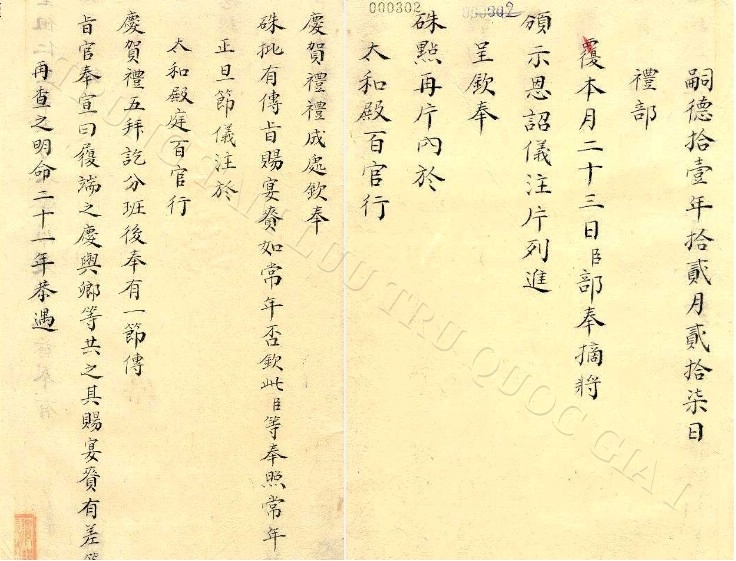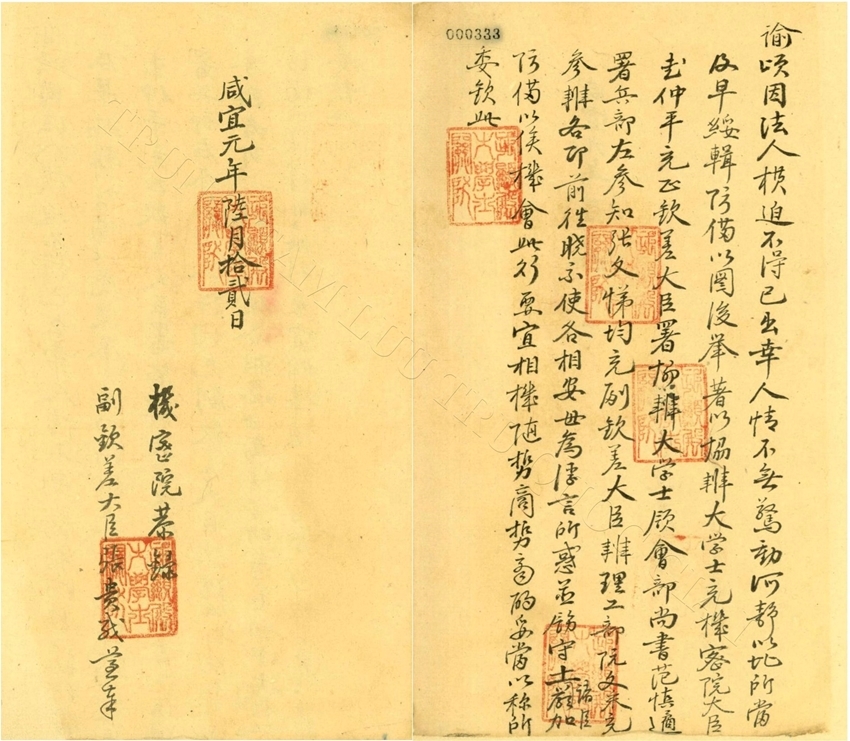 |
| The Imperial Archives of the Nguyen Dynasty recorded the Lunar New Year rituals and proclamation of blessings (Photo: The National Archives Center No.1) |
The exhibition space will introduce to the public hundreds of pages of unique documents, which is selected from the Imperial Archives of the Nguyen Dynasty - the World Documentary Heritage, and many typical artifacts; with many important documents due to be published for the first time. This is a valuable source of original documents with highly reliable information, whose content reflects almost every aspect of Vietnamese society under the Nguyen Dynasty. With special values in their content and form, the Imperial Archives of the Nguyen Dynasty were recognized by the UNESCO as a Documentary Heritage of the Asia - Pacific Region in 2014; then, and in 2017, they were recognized by UNESCO as a World Documentary Heritage.
The Nguyen Dynasty, the last monarchy in Vietnamese history, left behind many valuable legacies, including the Imperial Archives. These are the only original administrative documents in Vietnam and among the few in the world, which have still preserved the direct autographs of approval by the emperors on the document. Over 143 years of existence (1802 - 1945), the Nguyen Dynasty left its mark in history on unifying the country, establishing sovereignty, and diplomatic relations, constructing of the capital, culture, education, and social life, administrative institutions, legal regulations, and bibliographical examinations, etc., which were all clearly reflected in the Imperial Archives of the Nguyen Dynasty.
 |
|
The only copy of Can Vuong edict in the Imperial Archives of the Nguyen Dynasty dated on the 12th day of the 6th month in the year of Ham Nghi (1885). (Source: The National Archives Center No.1/ The Imperial Archives of the Nguyen Dynasty) |
According to The National Archives Center No.1, the Imperial Archives of the Nguyen Dynasty are a system of administrative documents, which was produced during the state management activities of the Nguyen Dynasty's administrative apparatus, including documents issued by the emperors, and documents submitted by agencies in the administrative system to the emperors for approval in vermilion ink. This document system was assigned to the Nguyen Dynasty's Cabinet to collect and manage in a unified manner into a block of royal archives.
Nowadays, the remaining Imperial Archives of the Nguyen Dynasty includes more than 86,000 original documents of 11 emperors of the Nguyen Dynasty, namely Gia Long, Minh Mang, Thieu Tri, Tu Duc, Kien Phuc, Ham Nghi, Dong Khanh, Thanh Thai, Duy Tan, Khai Dinh, and Bao Dai; among them, 10 emperors left their autographs of approval in vermilion ink on the documents. The two emperors without Imperial archives were Duc Duc and Hiep Hoa.
According to Hue Monuments Conservation Center, at this exhibition of the Imperial Archives of the Nguyen Dynasty, a notable point is the impressively designed space, combined with the projection technology and installation art, which will highlight the values of the documents and artifacts on display, and promise to bring vivid experiences to viewers. Besides, visitors can also directly interact to learn and discover more useful and interesting historical information from the Imperial Archives.
The exhibition space is also especially suitable for students, giving young people useful historical lessons from the Imperial Archives, thereby supplementing and enriching their knowledge about history and culture in school.
